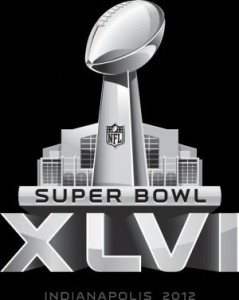My quick post-game take on the whole “social Super Bowl” angle is that I don’t think any of the ad campaigns really moved the social-networking needle. Though I missed part of the first quarter I didn’t see any ads that asked for an online audience interaction, which might have been fun. And the mobile game platforms, both NBC’s website broadcast and Verizon’s NFL Mobile app, were so far behind the live action they were useless as a “second screen” for viewers also watching the television.
A quick kudo to Twitter for not crashing in what was probably the most-active day ever on Twitter (which is kind of a meaningless stat since every big event for the foreseeable future will become “the biggest” as Twitter becomes more mainstream and adds more users). But I have to give a conditional “fail” to NBC’s online broadcast of the game, which was anywhere from three to four plays behind the live action, even showing commercials while the “real” game was live.
Though I understand why technically the online show might be slower, the wide gap made it impossible to keep the laptop (or tablet) open while watching the game on TV, eliminating the whole “second screen” thing that the online broadcast was supposed to enable. Plus I was underwhelmed by NBC’s multiple-choice camera views — they were uninteresting and pretty much blah compared to the rapid-fire screen switching you get from watching professional broadcasters produce a game live. So maybe that whole viewer-choosing-the-camera thing is overrated.
And Verizon’s NFL Mobile app, while glitch-free over in-house Wi-Fi and a 4G cellular signal, was still anywhere from 23 to 28 seconds behind the live action, also rendering it useless except maybe for trips to the bathroom. But with all the commercial breaks that’s hardly a concern during the Super Bowl. Maybe these alternative platforms will be more important for events with multiple things happening at once, like the Olympics or a golf tournament like the Masters. And maybe advertisers will become more bold and try more live interactive ads in the future. But for right now the “Social Super Bowl” didn’t live up to its advance billing.
UPDATE: As we thought, the Twitterers were out in force:












